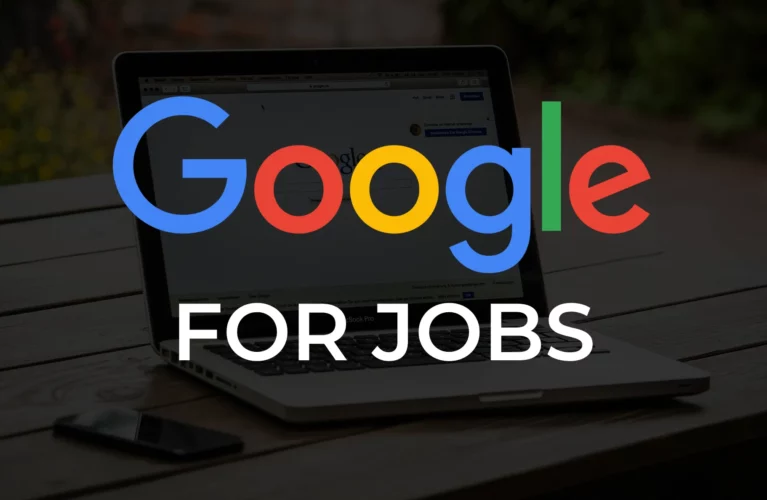Have you ever gone grocery shopping when you’re already hungry? More often than not, it leads to hasty decisions and poor choices that leave you with a fridge-freezer full of unnecessary items that perhaps you could’ve gone without.
With a little planning, however, it can be far more efficient and cost-effective to shop for groceries once or twice a week, armed with a specific shopping list and a clear idea of what meals you’re cooking this week.
And yet, plenty of organisations adopt the first approach to hiring new employees… Wait until a position needs filling urgently, and then somehow try to pluck the ideal candidate out of the air with a few job ads and social media posts.
To find the right person for the right role at the right time, a lot of stars need to align. Instead of shopping on an empty stomach, why not plan ahead with a targeted recruitment strategy that caters for your growing business and reaches the right audience?
This is employer marketing at its finest, and this guide illustrates how to execute it with precision. We’ll cover:
- What is recruiter marketing?
- Why is recruitment marketing so important?
- How does recruitment marketing work?
- Planning your recruitment marketing strategy
- Executing your recruitment marketing strategy
What is recruiter marketing?
Cutting to the chase, recruitment marketing is the process of attracting, engaging, nurturing and converting candidates who are ideally suited to the emerging roles in your company. It involves creating a strategic campaign that uses job ads, social media, career sites and proactive outreach to bring the best talent to you. And that’s the key – they are coming to you, rather than you searching for them.
Not just that, but they’re coming to you right when these opportunities are opening up within your organisation, rather than you scrambling to find the right candidate when the opening is already causing inefficiencies in your business model. The advantages of this should be obvious.
Why is recruitment marketing so important?
Did you know that, according to Harvard Business Review’s findings from census data, the vast majority of people who took a new job in 2018 weren’t looking for one? Lack of interest in searching for a “better” job was exacerbated during the pandemic, as many working professionals with steady employment weren’t interested in jumping ship during this time of uncertainty.
This has led to a strong shift towards companies finding candidates, rather than jobseekers finding employment opportunities. Recruiters are starting to tap people on the shoulder, and they’re using the following tools to get their attention:
- SEO and Google Ads
- Captivating website/social media content
- Data analytics to segment candidates and deliver targeted recruitment campaigns
To put it another way, organisations are automating their recruitment marketing strategies to consistently attract strong talent on an ongoing basis… and if you snooze, you lose.

Image Source: Pixabay
How does recruitment marketing work?
Finding the right talent is an increasingly competitive process, and recruitment marketing helps to streamline your search by helping you:
- Develop an appealing employer brand with an enticing EVP (Employee Value Proposition)
- Figure out what your ideal candidate’s pain-points are, and what content they are engaging, so that you can deliver this content and reach your target audience at scale
- Optimise your employment messaging to resonate with strong candidates
- Constantly maintain a brand presence in the relevant talent pools
When executed correctly, recruitment marketing prioritises quality over quantity. The content puts your company in candidates’ peripherals, but only suitable candidates will connect with its tailored message.
“Ideally, you want candidates who are the right fit to opt into your recruitment processes of their own accord, while unsuitable candidates opt out of their own accord,” says David Pagotto, Managing Director at SIXGUN.
“How do you do this? By creating engaging content that conveys your brand’s core values and paints a picture of your company’s culture – your employee value proposition. Those who align with these values will opt in, and those who don’t will opt out.”
Planning your recruitment marketing strategy

Image Source: Pixabay
Before getting started, it’s important to know exactly what you want – this will inform your recruitment marketing strategy. To get the ball rolling for you, here are the typical goals you should be aiming to achieve:
- Creating a captivating employer brand message that resonates with quality talent
- Nurturing the right-fit candidates with automated recruitment workflows and targeted communications
- Building efficient pipelines for attracting talent in your targeted segments
- Encouraging internal mobility within your organisation, by improving the avenues available for internal hiring
- Reducing the amount of time spent finding ideal candidates for hard-to-fill positions
- Reducing the amount of money spent on recruitment agencies and similar external resources
However, let’s get more specific. Here’s an example – if you’re looking to attract decent candidates for hard-to-fill roles in health, then your goal should be something like creating a talent pipeline that generates 100+ quality applications per month from the health sector.
Once you’ve established your goals, you can now set out to create the framework for your brand’s recruitment strategy.
01.
Determine which roles are crucial to the organisation’s current and future success
Depending on the size of your organisation, this could be a long list and take time to finalise, so bring the key stakeholders into the discussion for a holistic result that covers every department.
For instance, a multinational insurance firm might have upwards of 30 separate talent segments that are constantly expanding with new hires, and you need to know which roles within these segments are imperative to company success, so that you can target your recruitment marketing accordingly.
02.
Hone in on these talent segments
Once you’ve identified these key talent segments, it’s time to hone in on them. Which roles are the most difficult to fill? Which talent segments are we constantly creating more positions in? Which talent segments have the highest turnover, or take the longest time to hire for? By answering these questions, you can develop a clear persona for engaging your right-fit candidates in each of these talent segments.
03.
Do some market research to better understand your audience

Image Source: Pixabay
How can you deliver targeted communications that resonate with your intended audience, if you don’t know who your intended audience is? Who are the candidates that have the appropriate skills, experience, attitudes and values to slot perfectly into your organisation?
Market research will help you gain a clear understanding of who your ideal candidate is, what their needs and motivations are, and where they’re most likely to come into contact with your tailored recruitment marketing content.
Remember, market research doesn’t necessarily have to be external. Your most valuable resource for acquiring this information could be the employees who already work at your company within these talent segments. Ask them! Send questionnaires, hold focus group sessions and use the resulting data to inform your recruitment marketing strategy.
04.
Use automation to switch from reactive to proactive recruitment
What have we discussed so far? We’ve run through the preliminary steps that are necessary for you to:
- Segment your desired talent pools, so that you can;
- Drip-feed them highly personalised content, which creates;
- An ongoing positive impression of your company culture, which stays front of mind for the day when your ideal candidate decides their current role isn’t satisfying their needs
Right… it’s fair to say this is a pretty complex process, and one which can’t be achieved without the help of AI, machine learning and other advanced technologies. But more than that, these technologies are the tools that allow you to shift from:
- reactive recruitment (searching for candidates when a new role needs filling), to
- proactive recruitment (attracting the right talent to your organisation on an ongoing basis, while new opportunities continue to emerge organically)
As an example, consider the user experience for visitors to the “careers” section of your website. There are AI and machine learning tools that can observe a visitor’s previous browsing history and use this data to curate tailored recruitment marketing content just for them.
Executing your recruitment marketing strategy requires:

Image Source: Pixabay
01.
The right content
Does your content reinforce your employee value proposition? Don’t forget, your EVP is what helps audiences decide whether they are a good fit for your company, and vice-versa. Good recruitment marketing content won’t just introduce right-fit candidates to your organisation in a favourable way, but it will also dissuade unsuitable candidates – it does the filtering for you.
When creating recruitment marketing content, also keep in mind who you’re trying to engage, what their pain-points and motivators are, and what kind of content will leave a positive impression on them.
02.
The right channels

Image Source: Pixabay
There’s no point creating incredible content and posting it on Facebook and Instagram if your target talent segment mostly uses LinkedIn. The content is only as good as its reach, so keep your market research handy when strategising how to push your recruitment marketing content.
This is all part of your technique for reaching the right candidates for the right roles at the right time, so that your recruiting team can focus on hiring from a talent pool, rather than sifting through a sea of jobseekers. In other words, they can work on the business, instead of in it.
At this point, it’s impossible to continue discussing channels for recruitment marketing without bringing Google into the conversation.
Google Ads is a paid search platform where recruitment marketers bid to have their ads appear in relevant places online, like search engine results (text ads) or websites that support advertising (video/image ads). The benefit of video/image ads is that they give recruitment marketers an opportunity to express their brand’s core values and EVP.
However, there’s a caveat. Google Ads are good for intention, where recruiters are targeting candidates who are actively seeking out nursing jobs, for example. The nursing graduate searches “nursing jobs” in Google, and your ad appears front and centre.
Unfortunately, this isn’t how most people search for jobs – they use specific jobseeker search engines like Indeed, SEEK or CareerOne. Unless you are seeking highly qualified candidates for very specific roles, Google Ads ultimately burdens recruiters with higher costs and smaller payoff.
Social media, on the other hand, is a phenomenal recruitment marketing tool for casting a wide net and attracting eligible candidates to your brand. To use another example, a multinational telecommunications firm that’s constantly expanding its fleet of operators, programmers and technicians would benefit from honing in on “talent segments” and targeting a wide pool of well-suited candidates on social media.
This flips the process and creates a well-oiled machine for constantly attracting worthy applicants to your business, rather than recruiters trying to find them. Not only that, but a well-structured social media recruitment campaign will nurture candidates through the application process, keeping them engaged and reducing “churn”, where applicants simply drop off the map somewhere in the middle of the 10-step job hiring process.
Suitable candidates come across your recruitment marketing while browsing social media, they learn about your brand, begin the application process and enjoy a seamless experience throughout… What better way to introduce them to their potential new employer?
There’s another resource that might be at recruiters’ disposal in the future. It’s called Google For Jobs, and while the rollout has been delayed several times over the last few years, it was promised to be an essential tool for recruiters and HR professionals looking to gain that first-mover advantage for volume and top talent.
If Google For Jobs ever does come into fruition, here are some of the benefits it would bring to recruitment marketing:
- It would feature prominently on Google’s search results page, so those who enjoy pride of place at the forefront of these results would get first access to job seekers.
- It would allow you to tap into organic rankings and visibility, which means less dependence on job ad boards.
- More precise searching and filtering capabilities in the job-seeking space, making it easier for the right talent to find you.
- Companies that optimise their career sites for Google For Jobs would potentially see a 20% increase in organic traffic, thus improving their employer brand reach and strengthening their EVP messaging simultaneously.
- Finally, by building your SEO and job board visibility, your business would have a reliable long-term strategy in place for continuously generating organic job applications.
Remember, SEO is only effective in the long term. To climb up search engine rankings, you must publish quality content with the relevant keywords and then leave it there.
While this process isn’t synonymous with job ads (which are typically posted for a short period and then taken down once the position is filled), recruiter marketing SEO works for roles that your company is consistently hiring for.
Let’s go back to the large multinational telecommunications firm – if you’re constantly expanding your fleet of operators, programmers and technicians, then it’s well worth creating well-curated job advertisements for these positions on your career pages, and optimising them for search engines. They don’t change, and they don’t get taken down – they’re a permanent fixture of your recruitment marketing strategies.
03.
The right approach (proactive, not reactive)

Image Source: Pixabay
This takes us right back to the first point we discussed in this article – yes, my cheesy “shopping while hungry” metaphor. If you approach this process with the mindset that you’re targeting jobseekers, that’s all you’re going to get.
But what if the best person for the role already has a job, and they aren’t looking to jump ship? That is, not until they’re exposed to enough of your content that they decide your organisation aligns better with their own core values towards work culture…
Your recruitment marketing content is the vessel for nurturing relationships with the talent your organisation needs – both presently and in the future. Your audience might not be looking for a new role right now, but when they are, they’ll already have awareness and trust in your brand.
Or as David puts it, “Imagine your ideal candidate is a fully qualified, highly experienced, in-demand professional who is perfectly content in their current role. After another year or so, they start to get itchy feet. Their role changes slightly, or the work culture deteriorates just enough for them to start passively looking at job opportunities with other companies.
“Meanwhile, you’ve been delivering quality content at each of these touchpoints – not just job ads, but interesting articles on all the exciting things your organisation is doing this year. Articles that discuss topics important to this person, and relevant to their industry.
“These articles mention that your company is always expanding with new roles in this field, and there’s a link to your careers page. It’s a no-brainer.”
Get proactive in your recruitment marketing, and you’ll find the best people for your company – not just the best people available at the time. So, are you ready to start tapping on shoulders?
SIXGUN provides high-performance employer marketing solutions to boost your recruitment campaigns
As Melbourne’s premier employer branding agency, SIXGUN specialises in crafting bespoke recruitment marketing campaigns that leave a lasting positive impression on your target talent pool.
We aren’t just another digital marketing agency – we are an extension of your business. Find the right match for emerging roles, and grow your organisation with the best talent out there.
To discuss how our dedicated team can use Search Engine Optimisation, Search Engine Marketing (Google Ads) and Social Media Marketing to devise a personalised recruitment marketing strategy for your business, get in touch.
Hero Image Source: Pixabay



